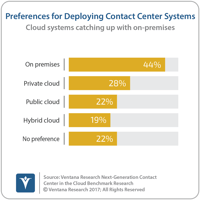The subscription business model has seen much growth in all aspects of the market in recent years. Now considered the standard for the digital age, the model’s implementation travels parallel to rising technology, leading to the demand for newer functionality and tools. As more and more vendors create their own versions, and as the subscription model is increasingly adopted, technology solutions are also advancing to support a broader range of products and services, as well as industries.
Read More
Topics:
Sales,
Subscription Billing,
Subscription Management,
partner management
Subscriptions are the future of business. Subscribers are essential to an organization’s overall business potential because they generate recurring revenue. In a black-swan event, demand for a subscription may spike or dip, so in these situations it’s of the essence that subscriptions get the attention they deserve. In challenging times, a “subscriber-first” mentality tends to take hold — this is not unreasonable but in focusing on satisfying subscribers, business leaders too often forget that...
Read More
Topics:
Sales,
Customer Experience,
Marketing,
Office of Finance,
Voice of the Customer,
Analytics,
Data,
Product Information Management,
Digital Technology,
Operations & Supply Chain,
Subscription Billing,
Conversational Computing,
Subscription Management,
Subscriber Experience
Until recently most organizations deployed systems on their own premises to build communications and contact center infrastructures, which often required them to integrate products from several vendors. In the past few years many vendors have moved their systems to the cloud, and others have begun as cloud-based suppliers. This trend has opened up the opportunity for more organizations to take advantage of modern communication systems and contact centers. Using the cloud for either, or both can...
Read More
Topics:
Big Data,
Mobile,
Customer Analytics,
Customer Engagement,
Customer Experience,
Machine Learning,
Wearable Computing,
Analytics,
Business Intelligence,
Cloud Computing,
Collaboration,
Internet of Things,
Contact Center,
Digital Commerce,
Subscription Billing











